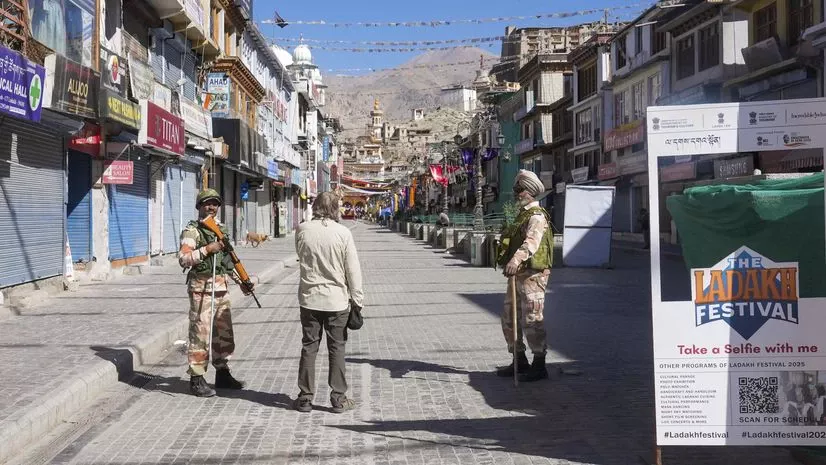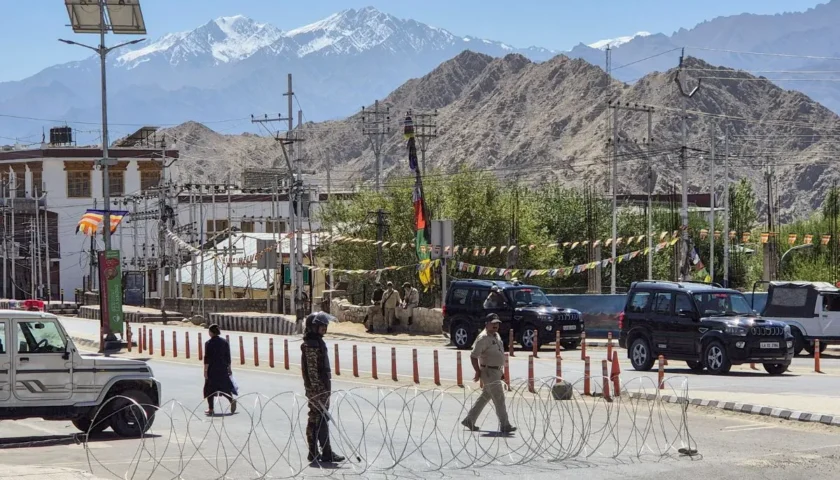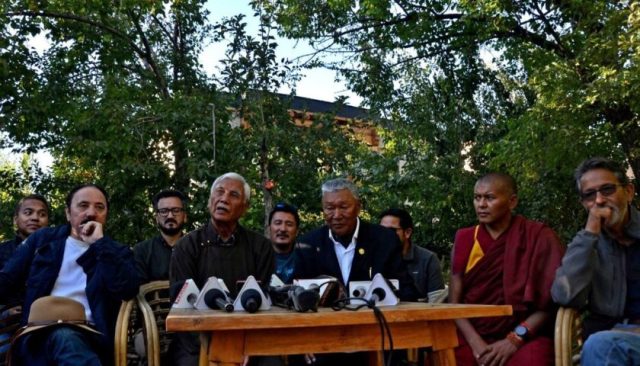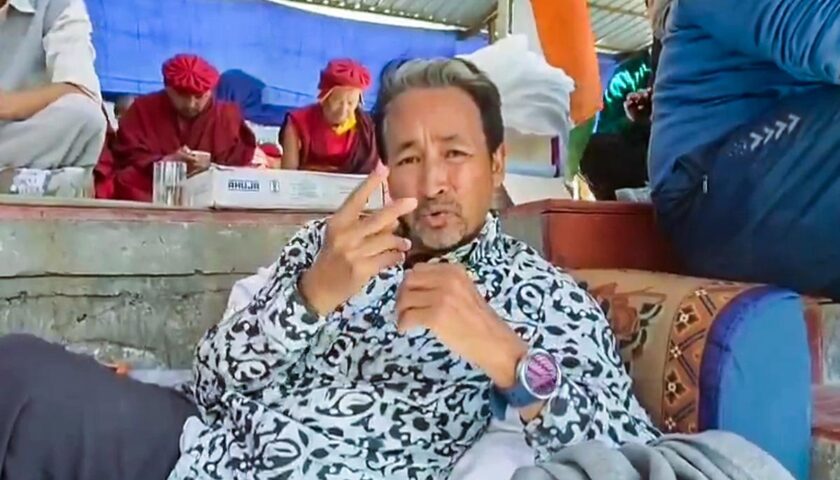LG Ladakh Announces Review of Restrictions, Promises Easing Soon
By: Javid Amin | 05 October 2025
In a bid to address mounting public unease, Lieutenant Governor Brig. (Retd.) B.D. Mishra on Sunday announced that the Ladakh administration is reviewing several existing restrictions and will ease them “soon,” aligning with “evolving ground realities and public sentiment.”
Speaking during a public outreach event in Leh, the LG emphasized that Ladakh’s governance model would remain transparent, accountable, and people-centric, reiterating that “the future of the Union Territory depends on collective effort between the government and its citizens.”
“We are listening. We are reviewing. And we are committed to easing restrictions in a manner that ensures safety, dignity, and development,”
— Lieutenant Governor B.D. Mishra
What Restrictions Are Being Reviewed?
While the LG refrained from specifying which restrictions are under immediate review, senior administrative sources suggest that the following areas are being actively considered:
-
Movement Curbs in sensitive border zones, particularly along the Line of Actual Control (LAC)
-
Limitations on public gatherings and protests, which have drawn criticism from student and trade bodies
-
Permit protocols for inter-district travel, especially between Leh and Kargil
-
Communication blackouts during high-security operations
The review follows months of civil society appeals for more open administrative functioning and greater flexibility in public engagement.
A senior official in Leh told Kashmir InFocus:
“The LG has sought detailed reports from district heads to identify which restrictions can be safely eased without compromising law and order.”
Governance With a Human Touch
The LG’s statement is seen as part of a broader shift toward dialogue-driven governance in Ladakh, especially after recent tensions over Sixth Schedule demands, ecological concerns, and calls for statehood.
“The people of Ladakh are not just stakeholders—they are co-authors of our progress,” the LG said, stressing participatory development and responsible administration.
He reaffirmed the administration’s priorities on:
-
Peace-building through inclusive dialogue between communities
-
Infrastructure development balanced with ecological safeguards
-
Youth empowerment via targeted programs in education, tourism, and entrepreneurship
-
Preservation of Ladakh’s cultural, linguistic, and spiritual heritage
Observers view this approach as a conscious effort to restore public trust after months of unrest and uncertainty.
Backdrop: Rising Voices and Recent Unrest
The LG’s assurance comes amid growing public frustration over administrative restrictions, which locals say have curtailed movement, delayed permits, and constrained civic space.
The September 24 violence in Leh, which left four civilians dead and nearly 100 injured, has heightened scrutiny of governance practices.
Following the incident, several community organizations—including the Leh Apex Body and Kargil Democratic Alliance—had called for an “immediate review” of policies restricting public expression and assembly.
Student unions and trade associations have also voiced concerns over delays in infrastructure projects, employment opportunities, and tourism regulations.
Public Reactions: Hopeful but Cautious
The LG’s comments have drawn mixed reactions from local leaders, activists, and civil society groups.
“Words must translate into policy,” said Sonam Dorjay, a youth activist from Kargil. “We need clarity on what exactly is being eased, and when.”
Another prominent voice, Tsering Angmo, a member of the Ladakh Students Collective, said the review should include clear timelines and public consultations:
“If the administration truly values transparency, the process must involve citizens—not just bureaucrats.”
Some trade groups, including the Ladakh Chamber of Commerce and Industry (LCCI), have welcomed the LG’s statement as “a positive gesture” but urged institutional mechanisms to track implementation.
“Periodic public briefings, policy trackers, and grievance redressal cells can bridge the communication gap between government and people,” said an LCCI representative.
Administrative Balancing Act
The Ladakh administration faces the dual challenge of maintaining border security while ensuring civil liberties and economic normalcy.
Officials admit that some restrictions—especially those on movement and communication—were imposed as precautionary measures following the 2020 LAC standoff and subsequent security alerts.
However, with relative calm restored and public sentiment shifting, calls for policy relaxation have gained momentum.
“There is a genuine desire among people to participate in governance. Restricting that will only deepen alienation,” said political analyst Gelek Phunchok.
He added that easing restrictions could help rebuild faith in institutions and counter perceptions of over-centralization.
Looking Ahead: Promises and Proof
The LG’s remarks also carry symbolic weight at a time when Ladakh’s autonomy and representation debates have intensified.
Both Leh and Kargil have seen prolonged protests demanding constitutional safeguards under the Sixth Schedule, aimed at protecting land, culture, and local governance rights.
While the administration has promised to review these demands, lack of visible progress has fueled skepticism.
“Announcements are welcome, but implementation is the real test,” said Rinchen Dorjay, a teacher and community worker. “People want tangible relief—freedom to move, to speak, and to work without barriers.”
Final Word
As Ladakh stands at a crossroads between security imperatives and democratic aspirations, the LG’s assurance offers a potential thaw in restrictive governance.
Whether the review process leads to meaningful relaxation—or remains a symbolic gesture—will depend on how swiftly and inclusively the administration acts.
For now, Ladakh watches. And waits.
“Governance cannot be about control—it must be about connection,” a Leh resident summarized. “If the government listens, the people will respond.”




